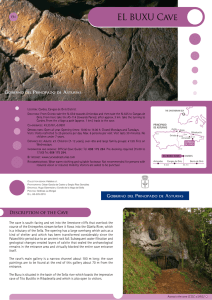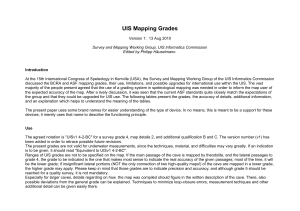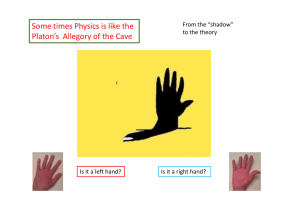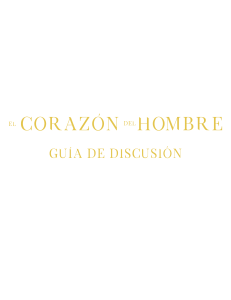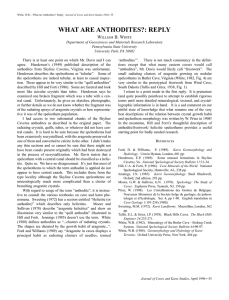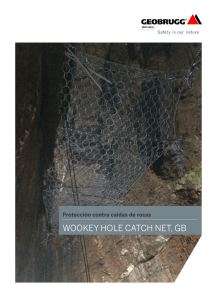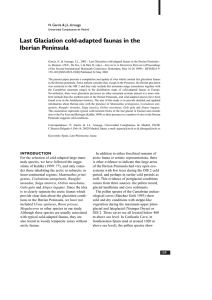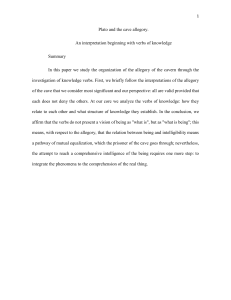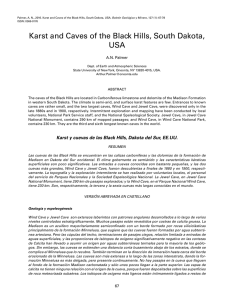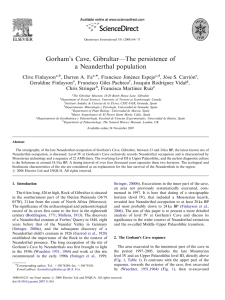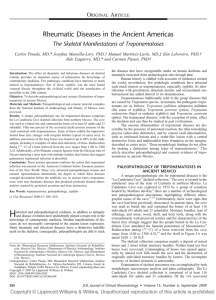The cave of El Pindal is situated at the mouth of the River Cares
Anuncio
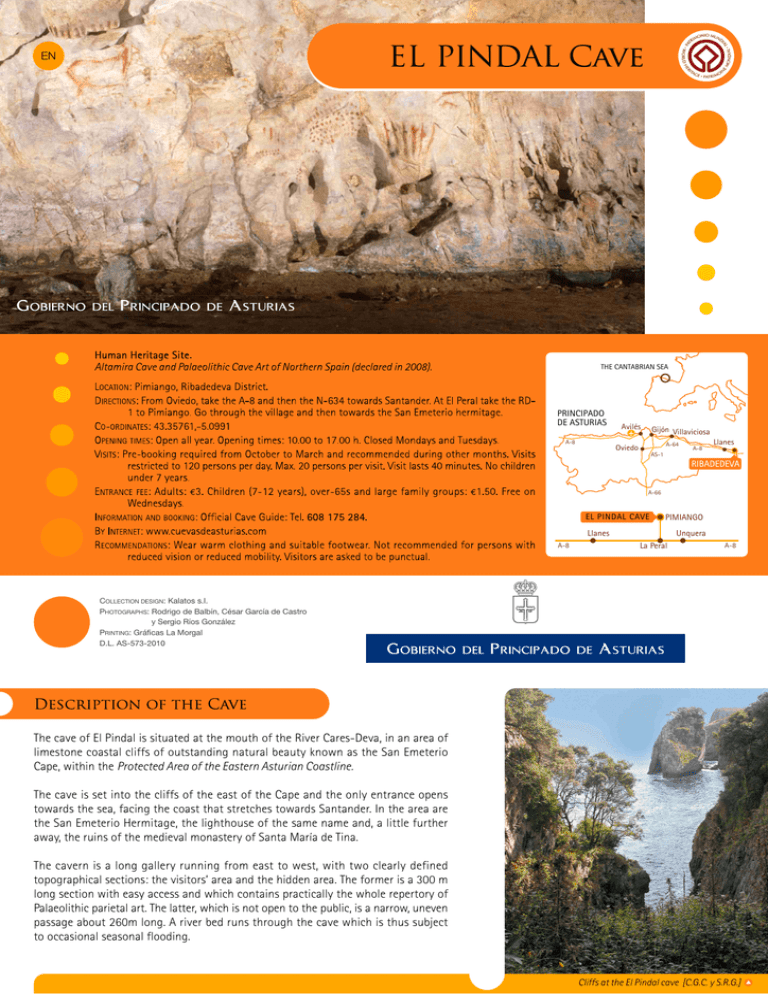
EN THE CANTABRIAN SEA PRINCIPADO DE ASTURIAS A-8 Avilés Gijón Villaviciosa A-64 Oviedo AS-1 A-8 Llanes A-66 EL PINDAL CAVE PIMIANGO Llanes A-8 Unquera La Peral A-8 COLLECTION DESIGN: Kalatos s.l. PHOTOGRAPHS: Rodrigo de Balbín, César García de Castro y Sergio Ríos González PRINTING: Gráficas La Morgal D.L. AS-573-2010 The cave of El Pindal is situated at the mouth of the River Cares-Deva, in an area of limestone coastal cliffs of outstanding natural beauty known as the San Emeterio Cape, within the Protected Area of the Eastern Asturian Coastline. The cave is set into the cliffs of the east of the Cape and the only entrance opens towards the sea, facing the coast that stretches towards Santander. In the area are the San Emeterio Hermitage, the lighthouse of the same name and, a little further away, the ruins of the medieval monastery of Santa María de Tina. The cavern is a long gallery running from east to west, with two clearly defined topographical sections: the visitors’ area and the hidden area. The former is a 300 m long section with easy access and which contains practically the whole repertory of Palaeolithic parietal art. The latter, which is not open to the public, is a narrow, uneven passage about 260m long. A river bed runs through the cave which is thus subject to occasional seasonal flooding. Cliffs at the El Pindal cave [C.G.C. y S.R.G.] Although the cave was already known, the scientific discovery of its art work in 1908 was thanks to the Cantabrian professor Hermilio Alcalde del Río. The exploration of this cave was part of a systematic inspection of the east of Asturias which also brought to light the caves of La Loja (Peñamellera Baja), Mazaculos (Ribadedeva) and Quintanal (Llanes). The first study of El Pindal’s cave art was published in 1911 as part of Les Cavernes de la Région Cantabrique, a work sponsored by Prince Albert of Monaco and written by H. Alcalde del Río, H. Breuil y L. Sierra. In 1954 F. Jordá and M. Berenguer published a complete revision of the paintings and engravings, together with the inconclusive archaeological excavations carried out by Jordá in the cave entrance. In 1957 work was undertaken to clear the entrance area and at this time a large rounded stone, painted in red around its perimeter, was discovered: this stone is now exhibited in the Asturias Museum of Archaeology and was attributed by Jordá to the Azilian period, and therefore later than the Palaeolithic works found in the cave. Mammoth [R.B.] The art work in El Pindal cave is located in five areas, two to the south and three to the north of the gallery which is open to the public. The first of the two sections on the south side is about 120 m from the entrance and shows a small horse’s head painted in red on the cave ceiling; the second, at the end of this gallery, high up on the cave wall, is made up of a group of black figures, which are in a poor state of preservation. Among these there is a horse’s head, a deer and the hind quarters of another animal figure, a branch shape (ramiform) and a ladder shape (escaleriform), painted on the ceiling a few metres from the previous group. The northern side has three sections. About 200 m. from the cave entrance is the Main Panel which contains the largest number of the cave’s paintings and engravings. This wall is about 10 metres in length and here we can see with varying degrees of clarity a series of red painted figures. There are six animal figures (three bison, a female deer and a mammoth) and a number of abstract shapes in ordered groups or distributed individually across the whole wall: traced lines and little Female deer [S.R.] sticks, dots, a ribbon shape (laciform), two shield-shapes (scutiforms) and a significant group of clubshapes (claviforms). There are also a large number of engraved figures (nine bison and four horses) on this wall. Near the Main Panel, moving towards the west, is the Fish Panel, consisting of an engraved fish together with a large headless bison and a number of red markings Further west still, a few metres before the cave narrows into the hidden section, one of the best known of the cave’s figures is preserved in a precarious state: this is a red painted mammoth, accompanied by two parallel lines of the same colour, only one of which can be clearly made out. The art work in the cave must have been produced in different phases over a long time from the early pre-magdalenian period (at least 20,000 years BP-before present) up until the central Magdalenian period (around 14,000 years BP). 1 Main panel 2 Horse’s head 3 The panel of black figures 4 The panel of signs
